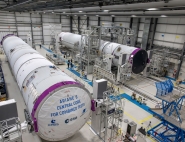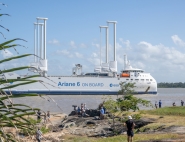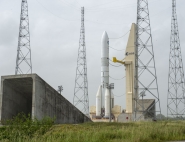History of CADMOS
Main events:
Since 1975, cooperation between CNES and the Russian space agency to carry out experiments aboard Bion/Photon capsules launched by Russian rockets.
1982: this cooperation includes manned spaceflights, at first with the Salyut 7 station (PVH mission: a French astronaut spends one week onboard) then with the Mir station from 1988 (ARAGATZ, ANTARES, ALTAIR, CASSIOPEE, PEGASE, PERSEUS missions). Astronauts are launched by a Soyuz spacecraft.
1985: beginning of cooperation with NASA for manned spaceflights onboard the shuttle (51-G first mission with the Discovery shuttle: a French astronaut spends seven days in orbit around the Earth), then the LMS (STS 78), STS 86 and STS 93 missions.
1988 : first scientific parabolic flight campaign for Cnes onboard the “Caravelle Zero-G”.
1992 : beginning of the US-Soviet cooperation onboard MIR.
beginning of the cooperation between CNES and medical university institutes.
1993: creation of CADMOS
1997 : first scientific parabolic flight campaign for Cnes onboard the “A300 Zero-G”.
1998: beginning of the construction of the International Space Station (ISS).
CADMOS selected as USOC (centers for users support to allow European scientists to monitor their experiments onboard the station) by the European space agency (ESA) and responsible for various instruments.
2001: permanent presence aboard the ISS of two to three crew members, allowing French astronauts to stay there ten days (launched with either Soyuz or Shuttle) (ANDROMEDE, STS111 missions).
2001 - 2005: however, since ESA, NASA and the Russian agency had concluded partnership agreements, Soyuz vehicles bring European astronauts on the ISS (taxi spaceflights), for instance for the ANDROMEDE mission. Over this period, CADMOS conducts several experimental sessions.
2004 – 2008: before the docking of the European Columbus module, CADMOS exploits ESA’s IUP program (Interim Utilization Program) during long-haul flights, called increments (six months onboard the station), for instance in 2006 with a European astronaut (ASTROLAB mission) and Russian cosmonauts.
2008: docking and commissioning of the European Columbus module.
CADMOS assists ESA for the in-flight commissioning of a scientific rack, Columbus’ EPM (European Physiological Modules Facility).
2009: permanent crew of six astronauts on the ISS since April 2009
beginning of the operation of the DECLIC instrument (DEvice for the study of Critical LIquids and Crystallization), a partnership between CNES and NASA.
2010: two other instruments developed by CADMOS are sent to the ISS:
- MARES instrument (Muscle Atrophy Research and Exercise System) for ESA
- CARDIOMED system (Cardiology medical) for the Russian space agency
In 2015, the launch of the ACES instrument (Atomic Clocks Ensemble in Space) will complete its field of experiments.

 Historique complet du CADMOS (pdf - 20.36 KB)
Historique complet du CADMOS (pdf - 20.36 KB)

